Rockwell Automation 1756-CNB Installation Instructions

Installation Instructions
ControlLogix ControlNet Interface Module
Catalog Numbers 1756-CNB, 1756-CNBR, Series E
Contents
For |
See Page |
|
|
Important User Information |
2 |
|
|
European Hazardous Location Approval |
3 |
|
|
North American Hazardous Location Approval |
4 |
|
|
Environment and Enclosure |
5 |
|
|
Prevent Electrostatic Discharge |
6 |
|
|
About the 1756-CNB and 1756-CNBR Series E Modules |
6 |
|
|
Understand Standalone and Redundant Control |
7 |
|
|
Before You Begin |
8 |
|
|
Install or Remove the Module Under Power |
14 |
|
|
Install the Module |
15 |
|
|
Remove the Module |
16 |
|
|
Connect the Module to the Network |
17 |
|
|
Troubleshoot the Module |
23 |
|
|
Interpret the Module Status Indicator and Display |
24 |
|
|
ControlNet Network Channel Status Indicators |
28 |
|
|
Specifications |
30 |
|
|
Rockwell Automation Support |
BackCover |
|
|
About This Publication
Use this document as a guide to install the ControlLogix ControlNet Bridge module.
Publication 1756-IN604A-EN-P - February 2006
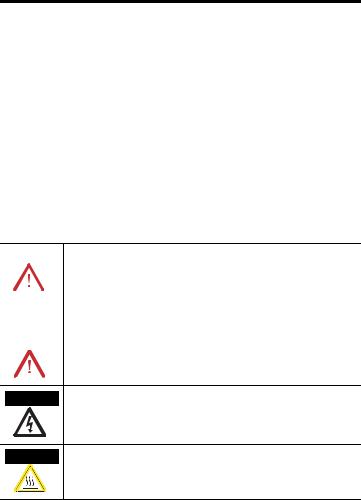
2 ControlLogix ControlNet Interface Module
Important User Information
Solid state equipment has operational characteristics differing from those of electromechanical equipment. Safety Guidelines for the Application, Installation and Maintenance of Solid State Controls (Publication SGI-1.1 available from your local Rockwell Automation sales office or online at http://literature.rockwellautomation.com/) describes some important differences between solid state equipment and hard-wired electromechanical devices. Because of this difference, and also because of the wide variety of uses for solid state equipment, all persons responsible for applying this equipment must satisfy themselves that each intended application of this equipment is acceptable.
In no event will Rockwell Automation, Inc. be responsible or liable for indirect or consequential damages resulting from the use or application of this equipment.
The examples and diagrams in this manual are included solely for illustrative purposes. Because of the many variables and requirements associated with any particular installation, Rockwell Automation, Inc. cannot assume responsibility or liability for actual use based on the examples and diagrams.
No patent liability is assumed by Rockwell Automation, Inc. with respect to use of information, circuits, equipment, or software described in this manual.
Reproduction of the contents of this manual, in whole or in part, without written permission of Rockwell Automation, Inc., is prohibited.
Throughout this manual, when necessary, we use notes to make you aware of safety considerations.
|
WARNING |
|
Identifies information about practices or circumstances that can cause an explosion in |
||
|
|
|
|
|
|
|
|
|
|
|
a hazardous environment, which may lead to personal injury or death, property |
|
|
|
|
|
damage, or economic loss. |
|
|
|
|
|
|
|
|
|
|
|
|
|
|
|
|
|
Identifies information that is critical for successful application and understanding of |
|
IMPORTANT |
|
|||
|
|
the product. |
|||
|
|
|
|
|
|
|
|
|
|
|
|
|
|
|
|
|
|
|
ATTENTION |
|
Identifies information about practices or circumstances that can lead to personal |
||
|
|
|
|
|
|
|
|
|
|
|
injury or death, property damage, or economic loss. Attentions help you identify a |
|
|
|
|
|
hazard, avoid a hazard, and recognize the consequences. |
|
|
|
|
|
|
SHOCK HAZARD
Labels may be located on or inside the equipment (for example, drive or motor) to alert people that dangerous voltage may be present.
BURN HAZARD
Labels may be located on or inside the equipment (for example, drive or motor) to alert people that surfaces may be dangerous temperatures.
Publication 1756-IN604A-EN-P - February 2006
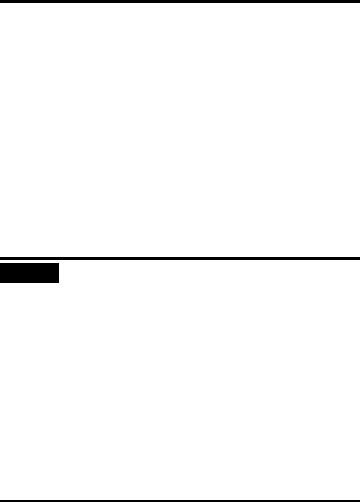
ControlLogix ControlNet Interface Module 3
European Hazardous Location Approval
European Zone 2 Certification
(The following applies when the product bears the EEx Marking.)
This equipment is intended for use in potentially explosive atmospheres as defined by European Union Directive 94/9/EC.
The LCIE (Laboratoire Central des Industries Electriques) certifies that this equipment has been found to comply with the Essential Health and Safety Requirements relating to the design and construction of Category 3 equipment intended for use in potentially explosive atmospheres, given in Annex II to this Directive. The examination and test results are recorded in confidential report No. 28 682 010.
Compliance with the Essential Health and Safety Requirements has been assured by compliance with EN 50021.
IMPORTANT
This equipment is not resistant to sunlight or other sources of UV radiation.
The secondary of a current transformer shall not be open-circuited when applied in Class I, Zone 2 environments.
Equipment of lesser Enclosure Type Rating must be installed in an enclosure providing at least IP54 protection when applied in Class I, Zone 2 environments.
This equipment shall be used within its specified ratings defined by Allen-Bradley.
Provision shall be made to prevent the rated voltage from being exceeded by transient disturbances of more than 40% when applied in Class I, Zone 2 environments.
Publication 1756-IN604A-EN-P - February 2006
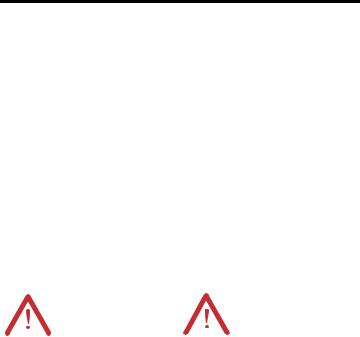
4 ControlLogix ControlNet Interface Module
North American Hazardous Location Approval
|
The following information applies when |
Informations sur l'utilisation de cet équipement en |
|
|||||||
|
operating this equipment in hazardous |
environnements dangereux: |
|
|||||||
|
locations: |
|
|
|
|
|
||||
|
|
|
|
|
|
|
|
|
|
|
|
Products marked “CL I, DIV 2, GP A, B, C, D” are |
Les produits marqués “CL I, DIV 2, GP A, B, C, D” ne |
|
|||||||
|
suitable for use in Class I Division 2 Groups A, B, |
conviennent qu'à une utilisation en environnements |
|
|||||||
|
C, D, Hazardous Locations and nonhazardous |
de Classe I Division 2 Groupes A, B, C, D dangereux |
|
|||||||
|
locations only. Each product is supplied with |
et non dangereux. Chaque produit est livré avec des |
|
|||||||
|
markings on the rating nameplate indicating the |
marquages sur sa plaque d'identification qui |
|
|||||||
|
hazardous location temperature code. When |
indiquent le code de température pour les |
|
|||||||
|
combining products within a system, the most |
environnements dangereux. Lorsque plusieurs |
|
|||||||
|
adverse temperature code (lowest “T” number) |
produits sont combinés dans un système, le code de |
|
|||||||
|
may be used to help determine the overall |
température le plus défavorable (code de |
|
|||||||
|
temperature code of the system. Combinations |
température le plus faible) peut être utilisé pour |
|
|||||||
|
of equipment in your system are subject to |
déterminer le code de température global du |
|
|||||||
|
investigation by the local Authority Having |
système. Les combinaisons d'équipements dans le |
|
|||||||
|
Jurisdiction at the time of installation. |
système sont sujettes à inspection par les autorités |
|
|||||||
|
|
|
|
|
|
locales qualifiées au moment de l'installation. |
|
|||
|
|
|
|
|
|
|
|
|
|
|
|
|
|
|
|
|
|
|
|
|
|
|
|
|
|
|
EXPLOSION HAZARD |
|
|
|
RISQUE D'EXPLOSION |
|
|
WARNING |
|
AVERTISSEMENT |
|
||||||
|
|
Do not disconnect equipment |
Couper le courant ou s'assurer |
|
||||||
|
|
|
|
|
|
|
|
|
||
|
|
|
|
|
unless power has been |
|
|
|
que l'environnement est classé |
|
|
|
|
|
|
removed or the area is known |
|
|
|
non dangereux avant de |
|
|
|
|
|
|
to be nonhazardous. |
|
|
|
débrancher l'équipement. |
|
|
|
|
|
|
Do not disconnect |
|
|
|
Couper le courant ou s'assurer |
|
|
|
|
|
|
|
|
|
|
||
|
|
|
|
|
connections to this |
|
|
|
que l'environnement est classé |
|
|
|
|
|
|
equipment unless power has |
|
|
|
non dangereux avant de |
|
|
|
|
|
|
been removed or the area is |
|
|
|
débrancher les connecteurs. |
|
|
|
|
|
|
known to be nonhazardous. |
|
|
|
Fixer tous les connecteurs |
|
|
|
|
|
|
Secure any external |
|
|
|
externes reliés à cet |
|
|
|
|
|
|
connections that mate to this |
|
|
|
équipement à l'aide de vis, |
|
|
|
|
|
|
equipment by using screws, |
|
|
|
loquets coulissants, |
|
|
|
|
|
|
sliding latches, threaded |
|
|
|
connecteurs filetés ou autres |
|
|
|
|
|
|
connectors, or other means |
|
|
|
moyens fournis avec ce produit. |
|
|
|
|
|
|
provided with this product. |
|
|
|
La substitution de composants |
|
|
|
|
|
|
Substitution of components |
|
|
|
|
|
|
|
|
|
|
|
|
|
peut rendre cet équipement |
|
|
|
|
|
|
|
may impair suitability for |
|
|
|
inadapté à une utilisation en |
|
|
|
|
|
|
Class I, Division 2. |
|
|
|
environnement de Classe I, |
|
|
|
|
|
|
If this product contains |
|
|
|
Division 2. |
|
|
|
|
|
|
|
|
|
S'assurer que l'environnement |
|
|
|
|
|
|
|
batteries, they must only be |
|
|
|
|
|
|
|
|
|
|
changed in an area known to |
|
|
|
est classé non dangereux avant |
|
|
|
|
|
|
be nonhazardous. |
|
|
|
de changer les piles. |
|
|
|
|
|
|
|
|
|
|
|
|
Publication 1756-IN604A-EN-P - February 2006

|
|
|
ControlLogix ControlNet Interface Module 5 |
|
|
|
|
Environment and Enclosure |
|||
|
|
|
|
|
|
|
This equipment is intended for use in a Pollution Degree 2 industrial |
ATTENTION |
|||
|
|
|
environment, in overvoltage Category II applications (as defined in IEC |
|
|
|
publication 60664-1), at altitudes up to 2000 meters without derating. |
This equipment is considered Group 1, Class A industrial equipment according to IEC/CISPR Publication 11. Without appropriate precautions, there may be potential difficulties ensuring electromagnetic compatibility in other environments due to conducted as well as radiated disturbance.
This equipment is supplied as open-type equipment. It must be mounted within an enclosure that is suitably designed for those specific environmental conditions that will be present and appropriately designed to prevent personal injury resulting from accessibility to live parts. The interior of the enclosure must be accessible only by the use of a tool. Subsequent sections of this publication may contain additional information regarding specific enclosure type ratings that are required to comply with certain product safety certifications.
NOTE: See NEMA Standards publication 250 and IEC publication 60529, as applicable, for explanations of the degrees of protection provided by different types of enclosure. Also, see the appropriate sections in this publication, as well as Industrial Automation Wiring and Grounding Guidelines, Allen-Bradley publication 1770-4.1, for additional installation requirements pertaining to this equipment.
Publication 1756-IN604A-EN-P - February 2006
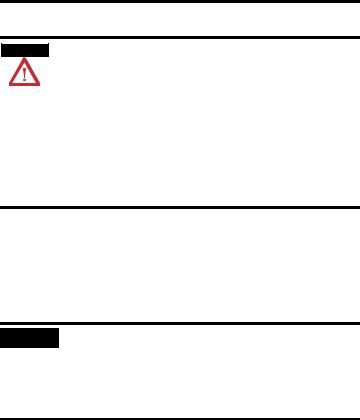
6 ControlLogix ControlNet Interface Module
Prevent Electrostatic Discharge
ATTENTION This equipment is sensitive to electrostatic discharge, which can
cause internal damage and affect normal operation. Follow these guidelines when you handle this equipment:
•Touch a grounded object to discharge potential static.
•Wear an approved grounding wriststrap.
•Do not touch connectors or pins on component boards.
•Do not touch circuit components inside the equipment.
•If available, use a static-safe workstation.
•When not in use, store the equipment in appropriate static-safe packaging.
For additional information, refer to Industrial Automation Wiring and Grounding Guidelines, publication 1770-4.1.
About the 1756-CNB and 1756-CNBR Series E Modules
The 1756-CNB and 1756-CNBR Series E modules work for all nonredundant ControlLogix applications.
IMPORTANT
Only the 1756-CNB and 1756-CNBR, Series D modules are supported in ControlLogix Redundancy releases 8, 11, 13, and 15. After a firmware upgrade to version 11.xx, Series E will be supported in ControlLogix Redundancy release 15 or later.
You cannot upgrade a Series D module to a Series E module.
Publication 1756-IN604A-EN-P - February 2006
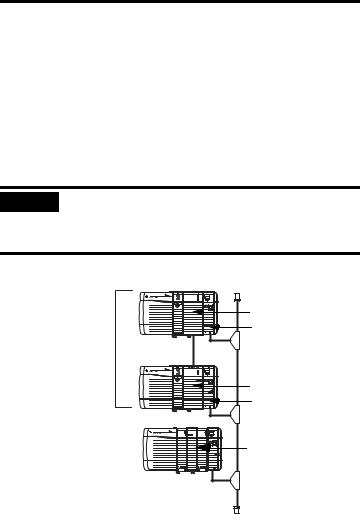
ControlLogix ControlNet Interface Module 7
Understand Standalone and Redundant Control
You can use the 1756-CNB and 1756-CNBR Series E modules as standalone or in firmware version 11.xx as redundant control. For standalone control, only one set of modules is required. For redundant control, two ControlLogix chassis are populated with identical pairs of modules called partners. The chassis that performs active control is called the primary chassis and the modules in the chassis are called primary modules. The other chassis is called the secondary chassis and the modules in the chassis are called secondary modules. These installation instructions discuss both standalone and redundant control; read them carefully to distinguish the procedures and requirements for each type of control.
IMPORTANT
If you use redundant control, you must select the same ControlNet network address for each set of partner modules. You must also place the partner modules in the same corresponding slots in their respective redundant control chassis pair.
Primary Chassis |
1756-SRM |
|
|
1756-CNB |
|
|
1756-CNB/CNBR |
|
Redundant Control |
1756-CNBR |
|
|
||
Chassis Pair |
|
|
Secondary Chassis |
1756-SRM |
|
-CNB |
||
|
||
|
17566-CNB/CNBR |
|
|
1756-CNBR |
|
I/O Chassis |
1756-CNB |
|
1756-CNBR |
||
|
||
|
ControlNet |
|
|
Network |
|
|
Publication 1756-IN604A-EN-P - February 2006 |
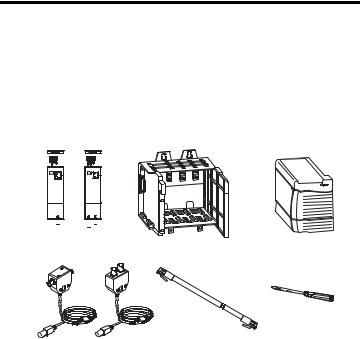
8 ControlLogix ControlNet Interface Module
Before You Begin
Before you install the module you need to make sure you:
•Know how to handle the module.
Refer to the section Prevent Electrostatic Discharge.
•Have all of the necessary components:
1756-CNB or 1756-CNBR |
1756-A4, 1756-A7, 1756-A10, |
1756-PA72/75 or 1756-PB72/75 |
|||||||||||||
|
|
|
|
|
|
|
|
|
|
|
|
|
|
1756-A13, or 1756-A17 |
Power Supply |
|
|
|
|
|
|
|
|
|
|
|
|
|
|
|
|
|
|
|
|
|
|
|
|
|
|
|
|
|
|
|
|
|
|
|
|
|
|
|
|
|
|
|
|
|
|
|
|
|
|
|
|
|
|
|
|
|
|
|
|
|
|
|
|
|
|
|
|
|
|
|
|
|
|
|
|
|
|
|
|
|
|
|
|
|
|
|
|
|
|
|
|
|
|
|
|
|
|
|
|
|
|
|
|
|
|
|
|
|
|
|
|
|
|
|
|
|
|
|
|
|
|
|
|
|
|
|
|
|
|
|
|
|
|
|
|
|
|
|
|
|
|
|
|
|
|
|
|
|
|
|
|
|
|
|
|
|
|
|
|
|
|
|
|
|
|
|
|
|
|
|
|
|
|
|
|
|
|
|
|
|
|
|
|
|
|
|
|
|
|
|
|
1786-TPR,1786 -TPS
1786-TPYR, or1786 -TPYS(1) 1786-TP (temporary
network connections)
Small Screwdriver (optional)
(1)1786-TPS or 1786-TPYS taps recommended for network connections.
•Know the type of ControlNet network:
There are two types of scheduled traffic networks for ControlNet: single-keeper networks and multi-keeper networks.
Publication 1756-IN604A-EN-P - February 2006

ControlLogix ControlNet Interface Module 9
All 1756-CNB and 1756-CNBR modules are keeper-capable, as listed.
1756-CNB and 1756-CNBR |
Major/Minor Revision |
Keeper Type |
|
|
|
A |
1.xx |
Single-keeper |
|
|
|
B |
2.xx |
Multi-keeper |
|
|
|
C |
3.xx |
Single-keeper |
|
|
|
C |
4.xx |
Multi-keeper |
|
|
|
D |
5.xx |
Multi-keeper |
|
|
|
D |
7.xx |
Multi-keeper |
|
|
|
E |
10.xx |
Multi-keeper |
|
|
|
E |
11.xx |
Multi-keeper |
|
|
|
You must match the keeper to the type of network, or upgrade the firmware of the module at MAC ID 01 to be multi-keeper capable. Refer to the ControlNet Modules in Logix5000 Control Systems User Manual, publication CNET-UM001, for more information.
Publication 1756-IN604A-EN-P - February 2006

10 ControlLogix ControlNet Interface Module
Identify Module Features
Refer to the figure Module Features to identify the hardware components of the 1756-CNB and 1756-CNBR modules.
Module Features
Module Status
Alphanumeric
Display
ControlNet |
Module |
Network |
Status |
Channel Status |
Indicator |
|
|
Indicators |
|
Network |
|
Access Port |
|
Channel B
BNC Connector
(1756-CNBR only) |
Channel A |
BNC Connector |
Front View
Network Address |
Backplane |
||
Switches |
|
|
Connector |
|
|||
|
|
|
|
Side View
Publication 1756-IN604A-EN-P - February 2006

ControlLogix ControlNet Interface Module 11
Set the Module’s Network Address Switches
Use your fingers or a small screwdriver to set the module’s network address switches. For modules in a standalone chassis, you must specify a unique ControlNet network address; for modules in a redundant chassis, you must specify the same address for the secondary module that you specified for the corresponding primary module.
Side of Module |
Top of Module |
Front of Module
TIP
This module’s network address is 23.
You can select an address of 01 to 99 for modules in a standalone chassis or 01 to 98 for modules in redundant chassis. 00 is an invalid ControlNet network address.
Publication 1756-IN604A-EN-P - February 2006
